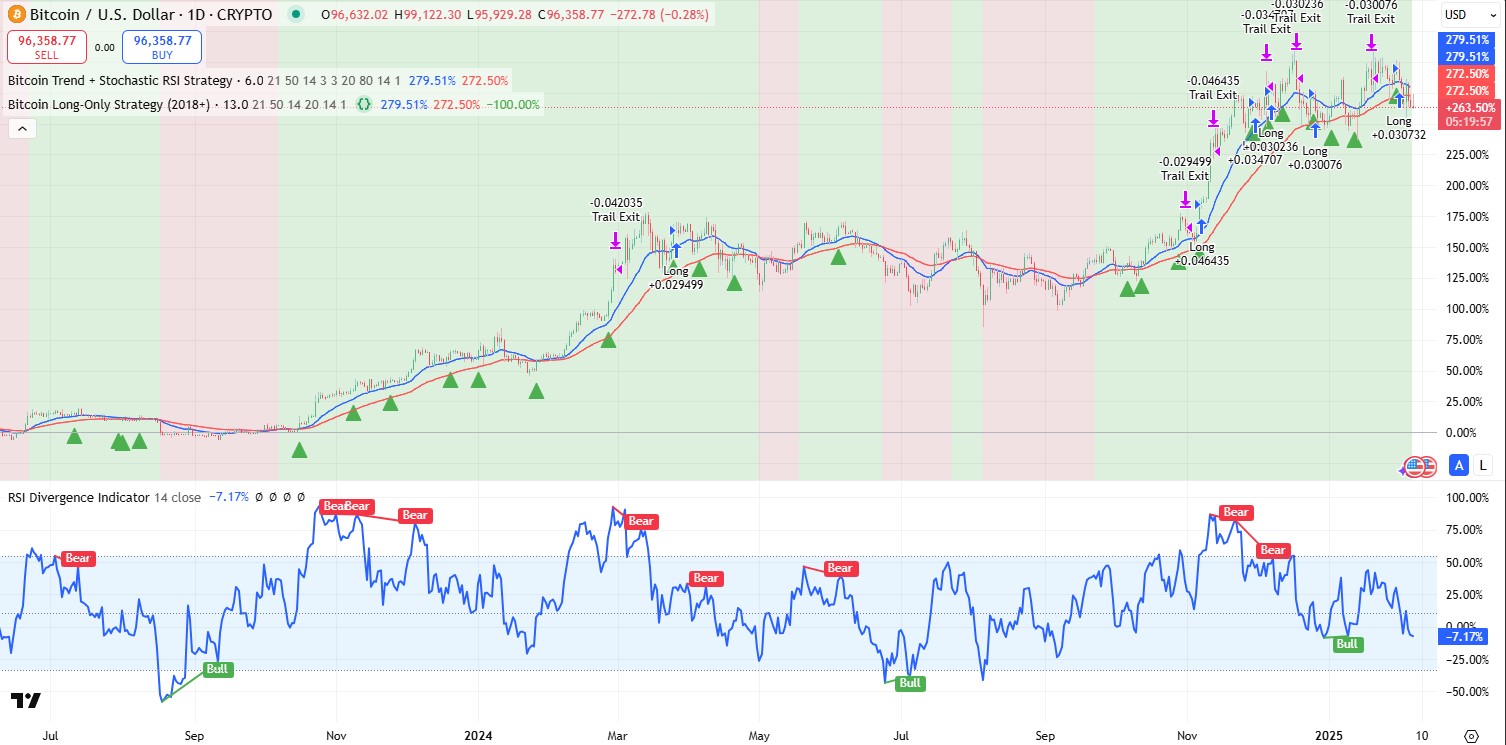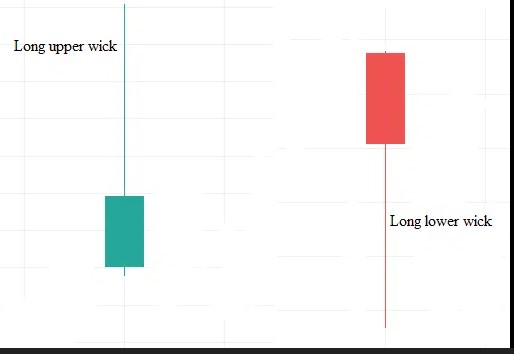
Yes and no. But more importantly it opens strategy testing to those who know nothing about coding. From Moneyweb.

Fund manager Alex Krainer asks whether AI can improve trading results. The answer, he says, is no, though it can make it easier for traders to develop and automate strategies.
There’s a great video by Michael Automates where he compares trading strategies that have been fed into different AI models and the results are truly impressive. DeepSeek, the newest of the models, performs admirably and it’s free.
The beauty of AI is that you don’t need to know or understand programming.
The more general view is that you have to have a strategy that AI can translate into code.
AI cannot make a profitable strategy for you. That needs testing and tweaking in the same way quantitative analysts do all day for a living.
Or is that true?
Asking DeepSeek
We decided to put this to the test with this question for DeepSeek:
If you were to develop a successful trading strategy for bitcoin, how would it look?
That’s all we asked. DeepSeek thought for 29 seconds and then came back with a pretty decent proposal with the following parameters:
- A trend filter using a 21 and 50 day exponential moving average to determine trends, and only trade in the direction of the trend;
- It added a Relative Strength Index to look for overbought/oversold deviations to identify short-term price reversals for more favourable entries;
- Position sizing (how much to trade) based on the average true range (ATR) indicator to account for bitcoin’s volatility; and
- Trailing stops using the ATR indicator.
This is smart because it understands the unique nature of bitcoin, its volatility, its tendency to revert to the mean, and its often spectacular rallies and crashes.
It generated code in Pine Script, which is the language used by TradingView for backtesting strategies.
We plugged this into TradingView and it came back with a syntax error in the code.
We told DeepSeek about this, gave it the line with the error, and it fixed it in seconds.
Here’s the result:
DeepSeek’s trading strategy for bitcoin

Trade time scale: 2010-2025
Number of trades: 162
Net profit: 298%
Maximum drawdown: 46%
The drawdown of 46% might look frightening, but this should be compared to bitcoin’s historical drawdowns of 70-80%.
Because there were some avoidable losses in the strategy, particularly when trading short, we asked DeepSeek to make the strategy long only with the following command:
Make trades long only.
This time the net profit was 380% with a maximum drawdown of 16%. It generated 45 trades since 2010.
Needless to say, a buy-and-hold strategy would have been far superior since bitcoin traded at less than $0.01 in 2010, but what this exercise shows is that DeepSeek was able to come up with a profitable trading strategy virtually on its own, with a little tweaking from ourselves.
The Gaussian channel trading strategy
We then used a strategy developed by Michael Automates, who kindly shares his code here.
He uses a Gaussian channel with a Relative Strength Index divergence indicator to fine-tune entries. There’s an explanation of the Gaussian channel here.
In simple terms it creates a higher and lower channel around a moving average to help the trader identify trends.
It’s long only. This strategy, commencing in January 2018, returned a handsome net profit of 2 392% with a maximum drawdown of 14%. The buy-and-hold strategy over this period would have been 622%, so the strategy beats it hands down. Also, the profit factor is 5.9 (the ratio of gross profits to losses), which is excellent.
That’s impressive, because further tweaking could no doubt improve the results.
Here’s what it looked like:

Trade time scale: 2018-2025
Number of trades: 28
% profitable: 43%
Net profit: 2 392%
Maximum drawdown: 14%
Buy-and-hold return: 622%
OpenAI strategy for ethereum (ETH)
We then turned to OpenAI for its own interpretation of the Gaussian channel strategy to ethereum/USD and, again, the results were impressive.
The net profit since 2018 was 511% with a maximum drawdown of 53%. There were 39 trades, of which 36% were winning. The profit factor was 1.5 which is acceptable.
A buy-and-hold strategy would have returned close to 5 000% as ETH was worth just cents in 2018. Now that it trades around $2 700, the Gaussian strategy outperforms the buy-and-hold approach since 2022.
ChatGPT
ChatGPT came back with very similar results for the Gaussian channel trading strategy.
We then asked ChatGPT to automate a trading strategy based on market reversals using the length of candle ‘wicks’.
A wick as shown in the green candle below shows the high, low, close and open.
A long wick means the market attempted to move higher and failed and is frequently a sign of market reversal – in other words, prices (in the case of the green candle) are likely to trend lower.
The opposite applies to the red candle, where a long wick would suggest a possible market reversal to the upside.

Here’s the instruction to ChatGPT:
I want to develop a trade called the “50 pip wick” trading strategy in Pine Script v5. This is for the GBPJPY currency pair. Identify any “wick” that is 50 pips or more. Immediately enter in the opposite direction at the open of the next bar. Exit when the trade is 200 pips in profit or at a stop loss of 200 pips.
ChatGPT came back with the required code, which we then backtested.
The result was not particularly impressive, with nearly 2 300 trades, 42% of them profitable, and a net profit of 9% over 15 years. But this is where we can start to tweak the strategy and see how to improve results – remembering that all results are based on historical data, while the future may play out in a very different manner.
The beauty of ChatGPT is that it suggests improvements to the strategy which can then be tried out, such as the addition of trailing stop-losses.
Where this is going
AI is an advance on more established platforms like MetaTrader, where traders had to do the coding themselves. Now anyone can do this.
“But from there on, the process is the same, whether you typed every line of your code yourself, or whether AI generated it for you,” says Krainer.
“From the moment when the proverbial rubber hits the road, trading runs into the inevitable problem of uncertainty. Quantitative strategies are always trained on past data. They can show you trading results ‘in sample’ and sans uncertainty.
“They can show you what would have happened had you implemented such-and-such strategy from this day until the present time,” says Krainer.
“They cannot tell you what might happen in the future and so once more, the investor or investment manager must make up his/her mind about the strategy: is it effective, will it work out in the long term, etc.? If a strategy goes through a losing streak (it will), is this a fatal failure or merely a temporary drawdown? If the strategy is failing, at what point will we recognise that it’s failing (vs. going through an ordinary drawdown)?”
Perhaps the real advantage of AI in developing trading strategies, and then automating them, is that they enforce discipline on traders.
The stats show that more than 90% of them lose, and they lose because they do not have strategies or rules (such as when to stomach a loss). AI can help with that.
